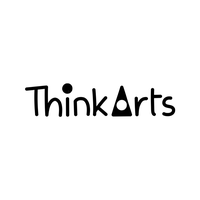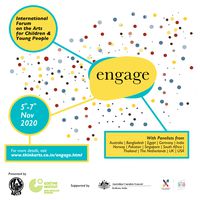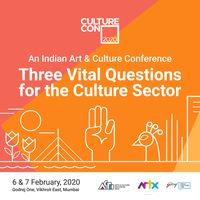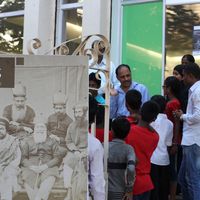Engage: A conversation about arts for children and young people

Preeti Gaongkar interviews the organisers of Engage, the international forum of the arts for children and young people organised last November 2020 by ThinkArts.
This Forum was organised as a response to the gaps identified in the arts for children and young people sector. Could you tell us a bit more about the background, the discussions that fed into the programming and your vision behind this edition?
At ThinkArts we believe that children should have access to positive and high-quality cultural experiences, both as participants, and as audiences of now and of the future. While there are several arts engagements created specifically for young audiences, there is still a huge gap, both in terms of programming and reach.
If we believe that the arts must be an integral part of every child's life, we need to work together on bridging this gap. For this discussion to offer solutions, we need conversations outside our silos that bring all stakeholders together on the same platform. This was the premise for the roundtable discussion on ‘Arts for Young People’ on 29 November 2019, held in Kolkata as part of the ThinkArts International Festival for Young Audiences. Discussants including teachers, parents, artists, cultural organisations, funding bodies – came together to explore critical questions and imagine possible solutions.
This enriching conversation led to new partnerships and contributed to ThinkArts’ activities during this year.
In 2020, we were motivated to involve more people in the conversation with a forum at a larger scale. While this pandemic compelled us into leaning on the virtual medium it also made it possible to include international voices at the Forum.
Engage was imagined as a platform for unifying voices and identifying common causes through conversations between various groups of people - all of whom have some role to play in the arts for young audiences' sector.
We set out with objectives for the Forum that led us to the themes and programming at Engage 2020. Each day revolved around two distinct but interdependent themes of ‘Arts and Education’ and ‘Young People in Cultural Spaces’. Our speakers and moderators interpreted these themes to present ideas from their own work and contexts. The third day of the forum especially focussed on participation and learning.
The objectives of Engage were:
- To advocate arts for children and young people at an international scale and reach a wide audience comprising various stakeholders.
- To feature multiple perspectives on arts for children and young people across the globe.
- To share gaps, concerns and practices among diverse contexts, and inspire solutions suited to local contexts.
- To promote conscious and consistent programming for children and young people in cultural spaces.
- To open the possibility for collaboration among various individuals working in the arts for children and young people sector and institutions across the globe.
- To explore methods of integration of arts in educational spaces and cultivate discussions around its implementation in local contexts.
The 2 main themes for the discussions at the Forum were ‘Arts & Education’ and ‘Young Visitors in Cultural Spaces’. What were the key ideas and/or recommendations that came to light for each theme?
Engage brought out valuable insights into the present and the future of arts for young audiences. One of the key ideas that was common across the two days was the importance of agency of children & young people – there was an emphasis on the need for young audiences as decision-makers, tellers of their own stories, creators of their own spaces, from speakers across diverse social and geographical contexts.
In the discussion around Arts and Education, there was a strong argument for the need to move beyond subject-centric approach to the arts, and for breaking through systemic boundaries to organically integrate STEM with the Arts. Another key idea was the confluence of arts and socio-politics – the fact that arts are a mode of representation of the social and the political is not to be shied away from and the value of arts as tool to initiate discussions about topical issues with children and subsequently, to encourage expression from children.
Conversations around accessibility were concurrent with the topic of the second day, Young People in Cultural Spaces. A key idea was the need for development of programming for families and further, the need for the programming to be developed with diverse backgrounds, particularly social and economic, in mind. Ideas around the benefits of digital media as a platform for creative exploration & innovation, and as an equalizer in certain contexts also emerged.
Arts as an act of empowerment to be best explored without the baggage of achievement, morality, legitimacy or evaluation, and the importance of play, sensorial and kinaesthetic learning for cognitive, communicative and artistic development, were a couple of other emergent ideas.
Engage also resulted in discussion about advocacy – how there is a need to be united and to affect mainstream policy-making and cultural discussions. Engage propelled discussions from countries where the arts have backing by the Government, with countries which absolutely do not – and the advantages of the former, in terms of funding, possibilities of innovation, and scope of work to name a few, were apparent.
In the discussions during the two days, India also featured as a country brimming with potential – with a lot of work ahead. It is our hope that with Engage, we were able to take one more step towards exploring this potential.
What would be the one aspect about the discussions that stood out for you? And why was it special?
The highlight for us was seeing arts for young audiences emerging as a point of concern across the globe – reflected not only by the speakers but also through the enthusiastic audience participation.
Arts for young audiences unfortunately remains a niche sector across the globe, albeit in varying degrees. In India, it is largely under-explored and under-discussed. Advocacy has always been implicit in our work since inception, and along with the two broad themes, Engage was another effort to build awareness about this sector and its importance.
The discussions by the speakers, and the audience participation was uplifting for us as we could not imagine these conversations and responses when we first started out. We had audiences across stakeholders – arts organisation members, educators, parents, museum professionals, and theatre professionals, across the world – engaging in enriching discussions with speakers, and even attending multiple sessions.
Our goal has always been to make high-quality arts experiences commonplace for children and young people. As the arts for young audiences gains more recognition, there will be more possibilities of exploring quality programming and engagements. Engage reassured us that more and more people are taking notice of this sector and are working towards its development.
The Forum was transformed into a virtual one and was organised online. What was your experience with the virtual world? Tell us about what worked and what did not?
ThinkArts’ foray into the online space began back in March when the lockdown was first put into effect in India. Up until then, we had only ever focused on live arts and live engagements. There was a period of adjustment needed, but by the time Engage was launched, we had conducted around 50 online workshops and sessions with children, reaching 1000 participants across India, and had also reached grown-ups through our Online Masterclasses in June. Although, of course, Engage was our first webinar of this scale.
As with most things, the virtual world comes with its pros and cons. Technical snags and internet connectivity issues are always a concern - but the biggest challenge for us would be the limitations in audience interaction. Although we made it a point to incorporate Q/A sessions and audience comments as a crucial part of the Forum, we found that these interactions lacked the energy and warmth that make live audience interactions so wonderful. We’ve yet to figure out how to really organise audience interaction on a large scale that holds up to its live counterpart.
Despite this, we were encouraged to see so many participants tuning in – we reached 532 unique audience members over the four sessions of the Forum, many of whom attended multiple sessions. Which brings us to the positive of the virtual platform, one of the most prominent advantages being the freedom to move beyond geographical restrictions.
If this Forum were to take place at a single physical location, it would take at least a year’s worth of planning around individual schedules and a much bigger budget! The audience too would be confined to people who live in the same city, with a few exceptions. We feel that since there is considerably less hassle to tune in from a computer, or even a phone, in the comfort of your own home, there was the potential to reach people who would be interested but would not usually make it to the programme due to lack of transport availability, inability to travel and so on. All one has to do to participate in an online Forum is click a button.
Many of our past live engagements have involved international collaborations or have taken place across cities in India, we have presented shows by artists from various countries to schools, venues, and at our ThinkArts International Festival for Young Audiences – but the participation has been limited to the people of that city and they didn’t quite span the reach that Engage had across both panellists and audiences. We do think that the online platform should be credited as one of the reasons that 21 speakers and moderators from 13 countries could come together along with audiences from 24 different countries in the world, and across 16 cities in India.
There was an interesting mix of digital content including screenings of performances created for ThinkArts grants and animation films for children from Kurzfilm Festival Hamburg. How easy or complicated was it to present these screenings? What was the audience response like?
The final day of the three-day Forum had two different sets of screenings. We were privileged to receive an animation film package from Mo & Friese Kinder Kurzfilm Festival, Hamburg which is the Children’s Edition of the Kurzfilm or Short Film Festival of Hamburg, Germany. A special thanks to the Goethe-Institut Kolkata for sourcing these films for us.
We were also really delighted to be able to share the digital pieces created for the ThinkArts Grant with the audiences at Engage.
The screenings themselves went smoothly and the responses we received were very encouraging. The children were endlessly curious about the animation films and didn’t hesitate to voice their opinions on the films in the comments.
One of them shared that this ‘Will be my favourite collection of films’ and another that, ‘I could listen and see this all day. Do we have to end?’ – so it was really lovely to be part of that moment.
As for the digital pieces by the grantees, it was the second time that these 8 pieces were being shared – and we had some people joining us again. Everyone had their own favourite piece, and questions about the characters and the stories. It was also heartening to see artists outside India as well, in Turkey and the UK, show interest to share the pieces with children in their networks.
This was all quite motivating, as the ThinkArts Grant for Artists & TYA Practitioners, supported by Takshila Educational Society, which we started in July, had really been a small effort on our parts to encourage artists in India to create work for young audiences amidst the circumstances, and to ensure that children have access to high-quality digital engagements made exclusively for them. Digital pieces for children were still emerging as a concept then - we remember trying to find examples for the grantees and coming up short. We had planned to reach out to schools and organisations across India – but we never anticipated the positive response these experimental pieces would receive.
We have since been able to share the pieces with children across schools, reaching over 10,000 children, and two of the pieces were even showcased at online editions of Children’s Theatre Festivals in India.
In which areas in the arts for children and young people sector, would you envision major developments/significant changes? How could arts practitioners from Asia and Europe cooperate to bring about these developments/changes?
We feel advocacy is most important - and to understand that when we are talking about arts for young audiences, it is not just art engagement that we are speaking about. Arts for children and young people is integrally linked to education, health and well-being and building citizens!
If we are to recognize this large population of ages under 18, we must give agency and include them as active participants in cultural dialogues. It was heartening to hear Solveig from Kulturtanken in Norway share about the work going in to prepare the White Paper to the Norwegian Government for Children and Youth Culture, wherein data from young people in the age group of 3 to 19 is being gathered.
It would be wonderful if arts practitioners from Asia & Europe could work together to share their practices of including young people’s voices in the society through an engagement with the arts. Collaborative & participatory art projects with children from different countries will enable children to identify and relate to the others, appreciate the differences, and take them a step further in understanding their world better.
Given the unparalleled situation that we are living in now, how do you think the arts sector could continue to engage in meaningful exchange? And what do you imagine ThinkArts to embark on next?
Engage drove home that the future of arts engagements lies in a hybrid model, as emphasised by Wendy from Australia Council for the Arts especially, where both digital and live, physical arts are accommodated. The digital space allows for greater accessibility in some respects, but live interactions allow scope for deeper engagements, therefore, meaningful exchange can be perhaps continued through well-balanced programming keeping in mind this hybrid model.
We also believe that collaborations are key – the digital shift opened a lot of possibilities, and ThinkArts explored various collaborative ventures in 2020, as did many other organisations. We think that it is important to keep that up – it is only through these collaborations, working jointly with stakeholders across institutions, that a change in the broader perception and reception of the arts for young audiences can be made.
ThinkArts would like to continue the conversations - and expand to include programmes based on key points that emerged from the discussions at Engage. Since Engage, we have led sessions on integrating arts with the subject curriculum for a school in India, held workshops for teachers to bring diversity and inclusion through the arts in the classroom, and collaborated with arts councils and institutions on projects which focus on the voices of children.
Similar content
posted on
16 Mar 2022
from - to
05 Nov 2020 - 07 Nov 2020
By culture360
26 Feb 2020
deadline
30 Jun 2021
08 Oct 2021






